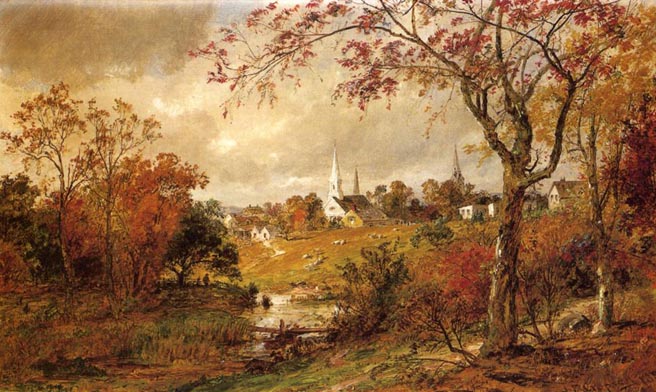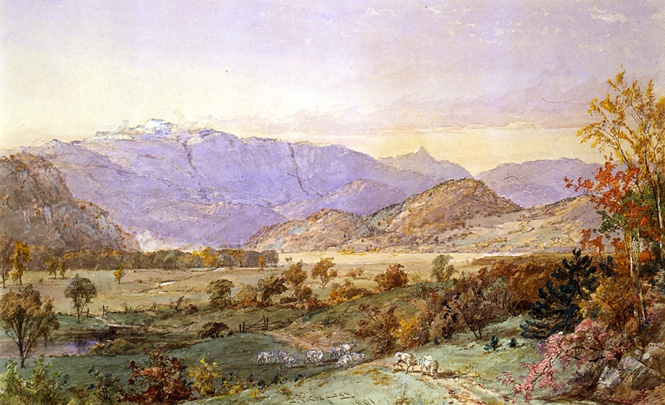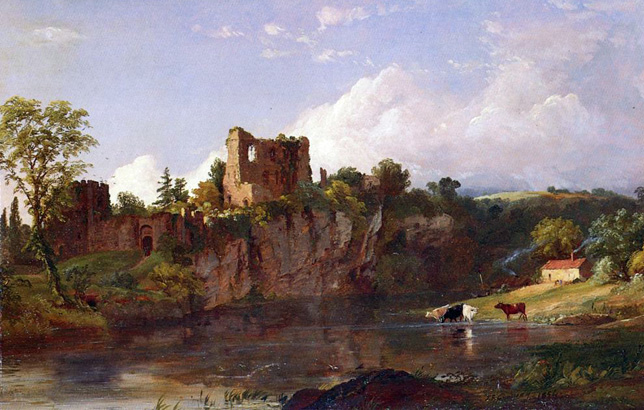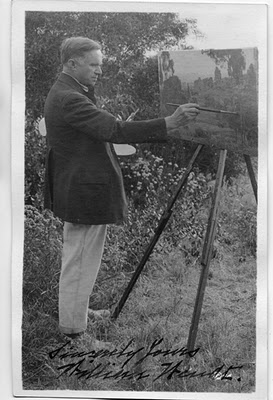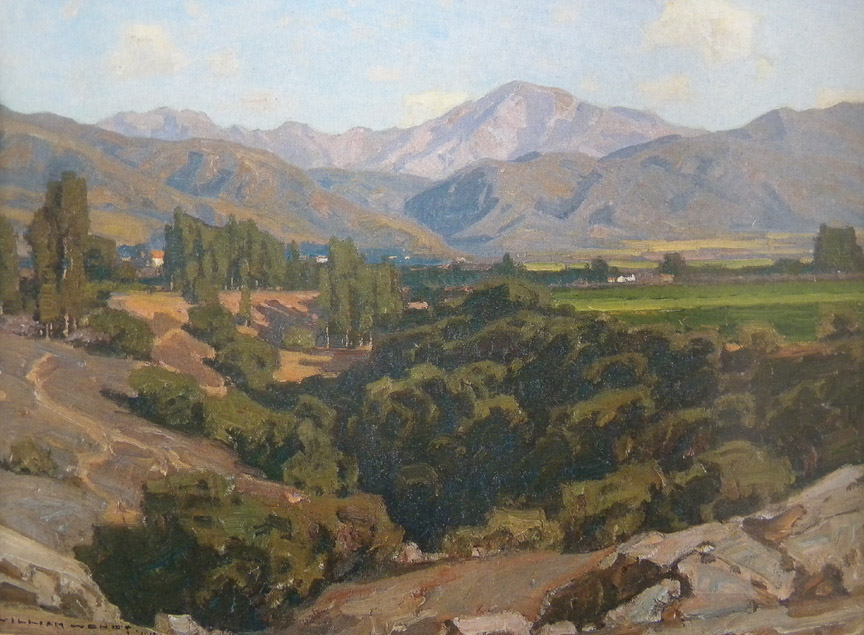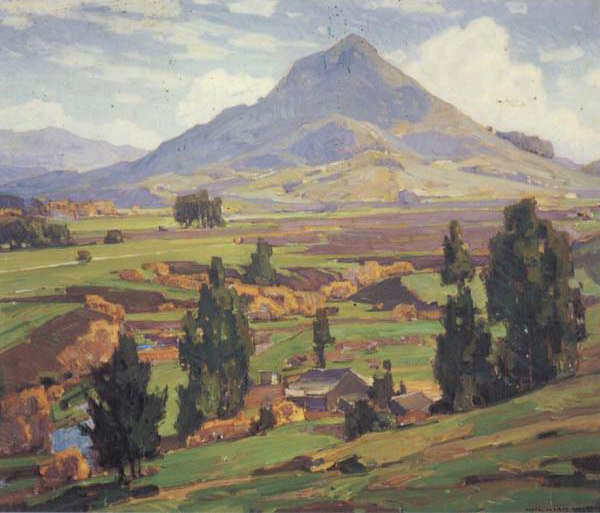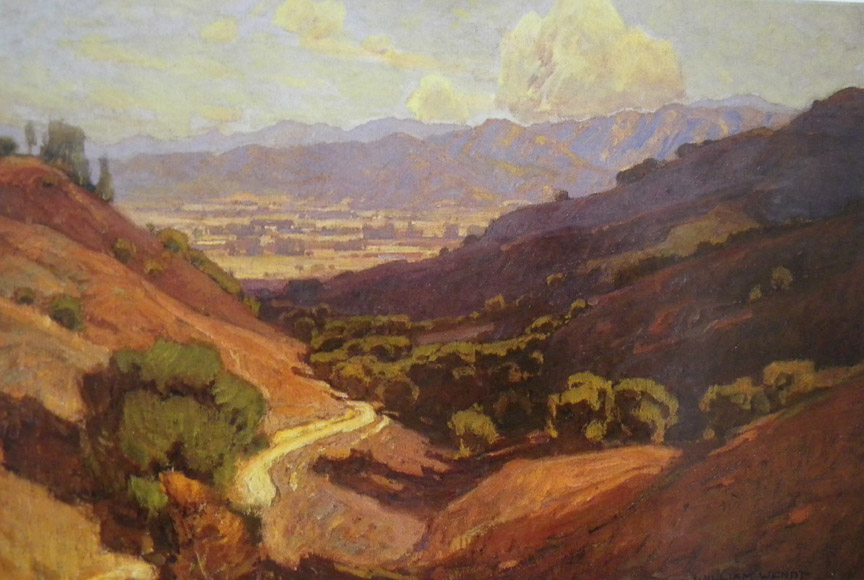 Born in 1879, Robert Spencer moved from
Born in 1879, Robert Spencer moved from 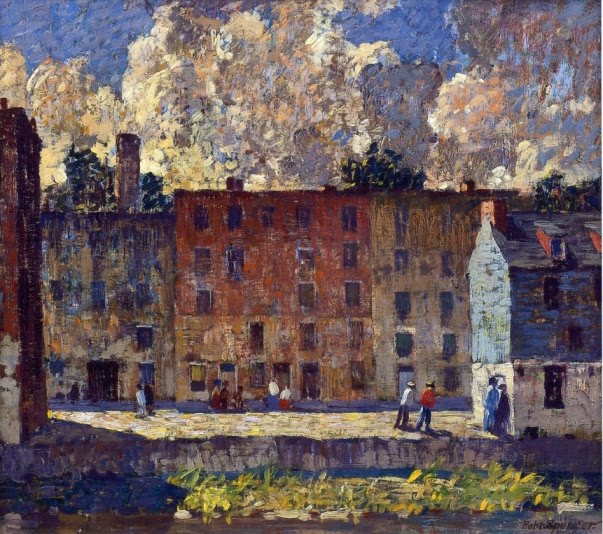 New York City to the Bucks County region in Southeastern Pennsylvania. Spencer was one of several talented American Impressionists in the Pennsylvania Art Colony centered in New Hope.
New York City to the Bucks County region in Southeastern Pennsylvania. Spencer was one of several talented American Impressionists in the Pennsylvania Art Colony centered in New Hope.
Spencer differed from most of his impressionist colleagues, often depicting tenements, factories and mills in Pennsylvania. He won a gold medal at the Panama-Pacific International Exposition in San Francisco in 1915 and the Metropolitan Museum purchased “Repairing the Bridge” in 1914. Spencer, who battled depression all his life committed suicide in 1931. He studied under William Merit Chase and Robert Henri and he was a founding member of the New Hope Group.
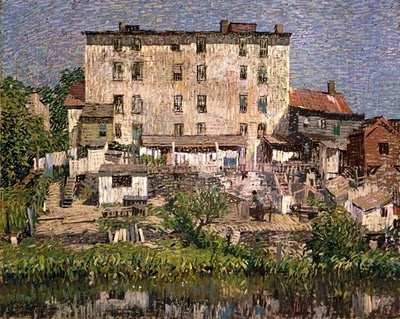
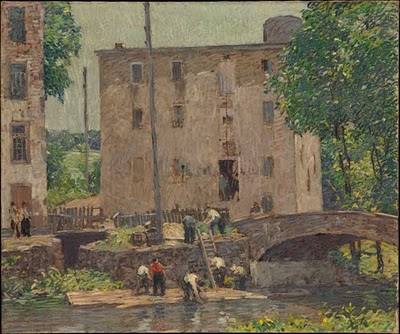
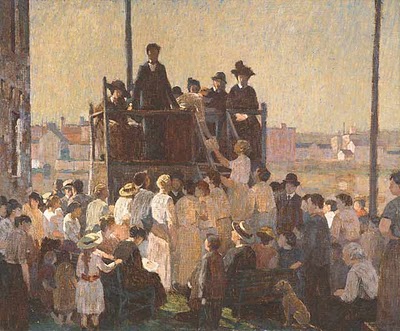
You can enjoy more of Robert Sencer’s paintings and biographical information in this book:

 The Cities, the Towns, the Crowds: The Paintings of Robert Spencer
The Cities, the Towns, the Crowds: The Paintings of Robert Spencer
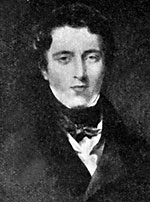 Bonington was born near Nottingham, England in 1802. His father was a master draftsman and started teaching him
Bonington was born near Nottingham, England in 1802. His father was a master draftsman and started teaching him watercolors at the age of 11. In 1817 he and his family moved to Calais, France. Bonninton went to Paris in 1818 where he met Eugene Delacroix and made watercolor copies of landscape paintings at the Louvre.From 1821 to 1822 he studied with Antoine-Jean Gros at the Ecole des Beaux-Arts. He
watercolors at the age of 11. In 1817 he and his family moved to Calais, France. Bonninton went to Paris in 1818 where he met Eugene Delacroix and made watercolor copies of landscape paintings at the Louvre.From 1821 to 1822 he studied with Antoine-Jean Gros at the Ecole des Beaux-Arts. He
exhibited at the Paris Salon in 1822 with sketches of Le Havre and Lillebonne. In 1824 he won the gold medal at the Paris Salon. He traveled throughout France painting seaports and coastal scenes.
Bonington was one of the first artists to paint watercolors plein air instead of in the studio. He had a big influence on the Barbizon painters and, along with Johann Jongkind and Eugene Boudin, he paved the way for the impressionists. Richard Bonington was only 26 years old when he died of tuberculosis. You can read more about Bonington in

 Richard Parkes Bonington: The Complete Paintings (Paul Mellon Centre for Studies in British Art)
Richard Parkes Bonington: The Complete Paintings (Paul Mellon Centre for Studies in British Art)
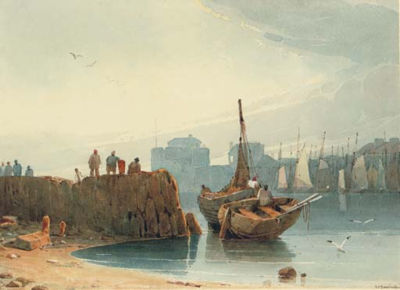
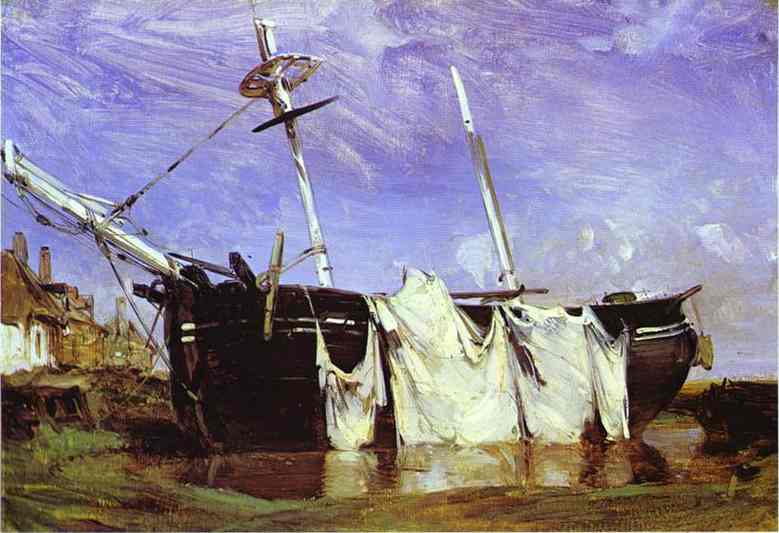
 Aldro Hibbard was born in 1886 in Falmouth Cape Cod. His family settled in Dorchester, MA in the mid 1890s. Aldro attended Massachusetts Normal Art School in Boston. The school stressed discipline and hard work. Extensive learning in drawing, composition, color and anatomy. Hibbard’s figure painting instructor was the great Boston painter Joseph DeCamp. After seeing a show of Monet’s work as well as Willard Metcalf and Childe Hassam, Aldro was attracted to the
Aldro Hibbard was born in 1886 in Falmouth Cape Cod. His family settled in Dorchester, MA in the mid 1890s. Aldro attended Massachusetts Normal Art School in Boston. The school stressed discipline and hard work. Extensive learning in drawing, composition, color and anatomy. Hibbard’s figure painting instructor was the great Boston painter Joseph DeCamp. After seeing a show of Monet’s work as well as Willard Metcalf and Childe Hassam, Aldro was attracted to the effects of broken color.
effects of broken color.
In 1909 Hibbard entered the Boston Museum School of Art where his instructors were Frank Benson and Edmund Tarbell. Aldro became an exceptional figure painter but loved the outdoor too much to be confined to the studio. Hibbard also sudied and painted in Europe and became resolved to outdoor painting. In the 1920s Aldro moved to Rockport, MA where  he helped form the Rockport Association. He also played for and managed the Rockport baseball team for 40 years.
he helped form the Rockport Association. He also played for and managed the Rockport baseball team for 40 years.
More history and images from Hibbard can be found in this book.
 A.T. Hibard, N.A.: Artist in Two Worlds
A.T. Hibard, N.A.: Artist in Two Worlds


Ernest L. Blumenschein was far and away the most well known of theTaospainters during his lifetime. His painstakingly executed canvases, in his distinctive style that was first called “post-impressionist” and later modernist, garnered him a wide and appreciative audience, and numerous awards. Ernest Blumenschein paintings today are held by the most important museum collections in theUnited States.
Ernest Blumenschein was born inPittsburgh,Pennsylvania, to parents of German descent, and raised inDayton,Ohio. His father was a professional musician and composer, who chiefly made his living as a conductor of large choruses. The young Ernest Blumenschein excelled at music from the beginning, and his father had high hopes that he would follow his footsteps and become a professional. When Ernest showed an interest in art, his father only pushed him harder to stay devoted to music, feeling that was where his greatest talent lay.
father was a professional musician and composer, who chiefly made his living as a conductor of large choruses. The young Ernest Blumenschein excelled at music from the beginning, and his father had high hopes that he would follow his footsteps and become a professional. When Ernest showed an interest in art, his father only pushed him harder to stay devoted to music, feeling that was where his greatest talent lay.
Ernest Blumenschein settled permanently inTaosin 1919 and remained inTaosfor the rest of his life, though at one point he began to spend winters inAlbuquerque, where it was not quite as cold. Even when he was eighty years old, he still labored  as diligently over his canvases as he ever had. When he died in 1960, he was the most famous resident ofTaos, and six years later the Ernest L. Blumenschein home was designated as a National Historic Landmark.
as diligently over his canvases as he ever had. When he died in 1960, he was the most famous resident ofTaos, and six years later the Ernest L. Blumenschein home was designated as a National Historic Landmark.
Today, Blumenschein’s work is held by the most prestigious museums in the country, including theMuseumofModern Art,New York, the Metropolitan, and the Smithsonian Institution. Ernest Blumenschein once said that he considered his greatest artistic heroes to be Shakespeare, Michelangelo, El Greco, Beethoven, and Bach. It is fitting that he too became preeminent among artists in his lifetime and has gone down as one of the most important painter’s in American history.
This volume is the definitive work on Blumenschein’s life and art, reproducing masterworks from a new exhibit along with additional works and historical photographs to form the most comprehensive assemblage of his paintings ever published. In Contemporary Rhythm describes not only his place in the Taos colony and western art but also his far-reaching influence on mainstream American art and national aesthetic developments.

 In Contemporary Rhythm: The Art of Ernest L. Blumenschein
In Contemporary Rhythm: The Art of Ernest L. Blumenschein

Museum Collections

Stark Museumof Art
ArizonaState University Art Museum
Colorado SpringsFineArtsCenter
Dallas Museumof Art
DenverArt Museum
EiteljorgMuseumofAmerican Indiansand Western Art
GilcreaseMuseum
Jonson Gallery of University ofNew Mexico
MuseumofArtatBrighamYoung University
MuseumofNew Mexico
Museum of The Southwest
National AcademyofDesign Museum
National Arts Club
National Cowboy andWesternHeritageMuseum
Oklahoma CityMuseumof Art
Panhandle-Plains Historical Museum
Phoenix Art Museum
RockfordArt Museum
RoswellMuseumandArtCenter
Sangre De Cristo Arts Center
SmithsonianAmericanArt Museum
The Fred Jones Jr. Museum of Art
TheHarwoodMuseumof Art
TheMuseumofModernArt
TheNewarkMuseum
University of Wyoming Art Museum

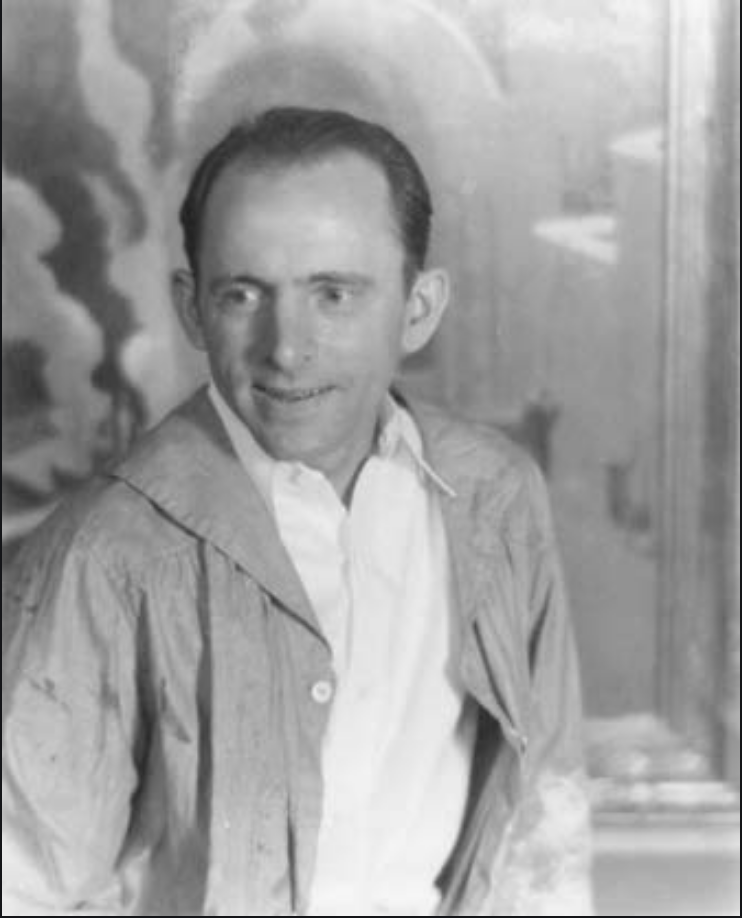 Carl Peters was born in Rochester NY in 1897 which had a rich tradition of art from the Hudson River school and tonalist painters in that area. Peters studied at the Art Students League in New York and with John F. Carlson in Woodstock. He was also influenced by lectures he heard from Robert Henri and Cézannes rural cubism . He painted the life of modern, everyday people and received many awards including several from the National Academy of Design.
Carl Peters was born in Rochester NY in 1897 which had a rich tradition of art from the Hudson River school and tonalist painters in that area. Peters studied at the Art Students League in New York and with John F. Carlson in Woodstock. He was also influenced by lectures he heard from Robert Henri and Cézannes rural cubism . He painted the life of modern, everyday people and received many awards including several from the National Academy of Design.
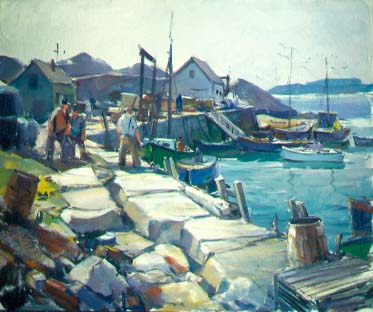 Peters’ work had a big influence on me along with Carlson and Gruppé mainly because there was a large amount of their work in the Chicago Galleries in the late 1970s.
Peters’ work had a big influence on me along with Carlson and Gruppé mainly because there was a large amount of their work in the Chicago Galleries in the late 1970s.


 Born in 1879, Robert Spencer moved from
Born in 1879, Robert Spencer moved from  New York City to the Bucks County region in Southeastern Pennsylvania. Spencer was one of several talented American Impressionists in the Pennsylvania Art Colony centered in New Hope.
New York City to the Bucks County region in Southeastern Pennsylvania. Spencer was one of several talented American Impressionists in the Pennsylvania Art Colony centered in New Hope.




 Bonington was born near Nottingham, England in 1802. His father was a master draftsman and started teaching him
Bonington was born near Nottingham, England in 1802. His father was a master draftsman and started teaching him watercolors at the age of 11. In 1817 he and his family moved to Calais, France. Bonninton went to Paris in 1818 where he met Eugene Delacroix and made watercolor copies of landscape paintings at the Louvre.From 1821 to 1822 he studied with Antoine-Jean Gros at the Ecole des Beaux-Arts. He
watercolors at the age of 11. In 1817 he and his family moved to Calais, France. Bonninton went to Paris in 1818 where he met Eugene Delacroix and made watercolor copies of landscape paintings at the Louvre.From 1821 to 1822 he studied with Antoine-Jean Gros at the Ecole des Beaux-Arts. He



 Aldro Hibbard was born in 1886 in Falmouth Cape Cod. His family settled in Dorchester, MA in the mid 1890s. Aldro attended Massachusetts Normal Art School in Boston. The school stressed discipline and hard work. Extensive learning in drawing, composition, color and anatomy. Hibbard’s figure painting instructor was the great Boston painter Joseph DeCamp. After seeing a show of Monet’s work as well as Willard Metcalf and Childe Hassam, Aldro was attracted to the
Aldro Hibbard was born in 1886 in Falmouth Cape Cod. His family settled in Dorchester, MA in the mid 1890s. Aldro attended Massachusetts Normal Art School in Boston. The school stressed discipline and hard work. Extensive learning in drawing, composition, color and anatomy. Hibbard’s figure painting instructor was the great Boston painter Joseph DeCamp. After seeing a show of Monet’s work as well as Willard Metcalf and Childe Hassam, Aldro was attracted to the effects of broken color.
effects of broken color. he helped form the Rockport Association. He also played for and managed the Rockport baseball team for 40 years.
he helped form the Rockport Association. He also played for and managed the Rockport baseball team for 40 years.


 father was a professional musician and composer, who chiefly made his living as a conductor of large choruses. The young Ernest Blumenschein excelled at music from the beginning, and his father had high hopes that he would follow his footsteps and become a professional. When Ernest showed an interest in art, his father only pushed him harder to stay devoted to music, feeling that was where his greatest talent lay.
father was a professional musician and composer, who chiefly made his living as a conductor of large choruses. The young Ernest Blumenschein excelled at music from the beginning, and his father had high hopes that he would follow his footsteps and become a professional. When Ernest showed an interest in art, his father only pushed him harder to stay devoted to music, feeling that was where his greatest talent lay. as diligently over his canvases as he ever had. When he died in 1960, he was the most famous resident ofTaos, and six years later the Ernest L. Blumenschein home was designated as a National Historic Landmark.
as diligently over his canvases as he ever had. When he died in 1960, he was the most famous resident ofTaos, and six years later the Ernest L. Blumenschein home was designated as a National Historic Landmark.


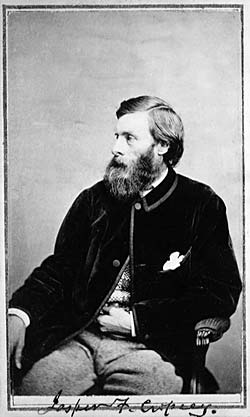 Cropsey, who was trained as an architect began painting shortly after he set up his architecture business. He had
Cropsey, who was trained as an architect began painting shortly after he set up his architecture business. He had